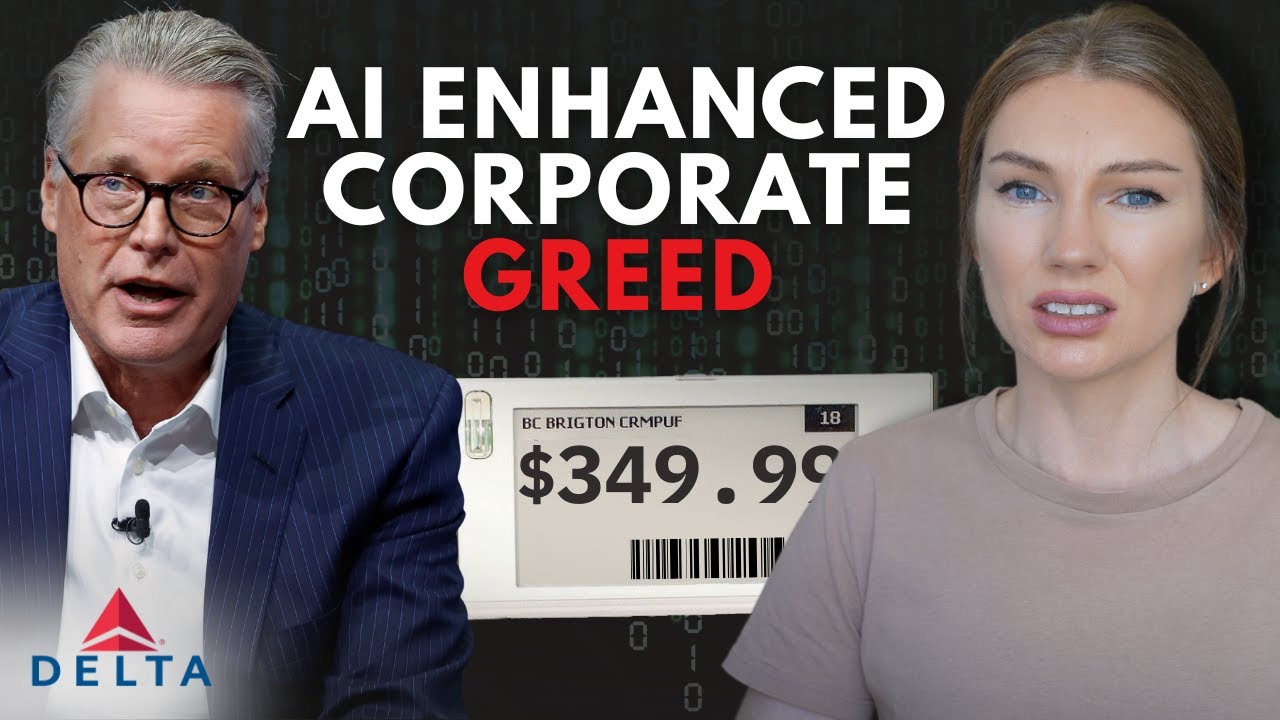The video highlights how corporations are increasingly using AI-driven dynamic pricing that leverages extensive personal data to tailor prices individually, often resulting in invasive data collection and unfair price discrimination against lower-income consumers. It also emphasizes the lack of adequate legal protections against these opaque and exploitative pricing practices, as current regulations fail to address the complexities of AI-enabled price gouging.
The video explores the escalating use of AI-driven dynamic pricing by corporations, highlighting how this technology is pushing price gouging to unprecedented levels. Unlike traditional dynamic pricing based on supply and demand, AI algorithms now analyze extensive personal data—including age, location, device type, and even battery life—to tailor prices individually. Examples such as Uber’s surge pricing during emergencies and airlines like Delta employing AI to optimize ticket prices illustrate how companies exploit real-time data to maximize profits. This personalized pricing extends beyond transportation to retail giants like Walmart and Kroger, where digital price tags and AI-powered displays adjust prices frequently, sometimes within seconds, often without transparent explanations.
A significant concern raised is the invasive data collection underpinning these AI systems. With online age verification and facial recognition technologies becoming more common, corporations gain access to sensitive personal information, including government IDs, social media activity, credit history, and even voting records. This data enables AI to build detailed consumer profiles, allowing companies to identify each individual’s maximum willingness to pay and adjust prices accordingly. Such practices effectively institutionalize price discrimination, where wealthier customers may pay more, but lower-income individuals often end up facing higher costs for essential goods and services.
Retailers like Walmart and Kroger are at the forefront of integrating AI into pricing strategies. Walmart’s shift to digital price tags allows for rapid price changes and obscures price increases, especially on clothing, which now requires app access to view prices. Kroger goes further by using AI-powered digital displays that combine advertising with pricing and have experimented with facial recognition to deliver targeted ads. These technologies, coupled with data from loyalty programs and in-store sensors, enable hyper-personalized marketing and pricing, raising ethical questions about consumer privacy and fairness.
The food industry is also adopting AI-driven pricing and upselling techniques. Wendy’s, for example, is rolling out AI-powered digital menu boards and chatbots that suggest additional items to increase order sizes. Despite public denials, internal documents and earnings calls reveal that these technologies are designed to boost revenue through dynamic pricing and personalized customer interactions. This trend reflects a broader corporate strategy to leverage AI not only for operational efficiency but also to extract maximum consumer spending, often without clear disclosure to customers.
Legally, the video points out that current regulations are ill-equipped to address AI-enabled price gouging. Existing laws on price gouging were created for natural disasters and do not cover algorithmic or personalized pricing. While some legislative efforts aim to curb these practices, many bills have stalled or expired. Corporations defend their use of dynamic pricing through terms of service agreements, and the law generally permits variable pricing as long as companies disclose it. As AI enables prices to change rapidly and individually, consumers face a new era of opaque and potentially exploitative pricing strategies, with little legal recourse or transparency.
